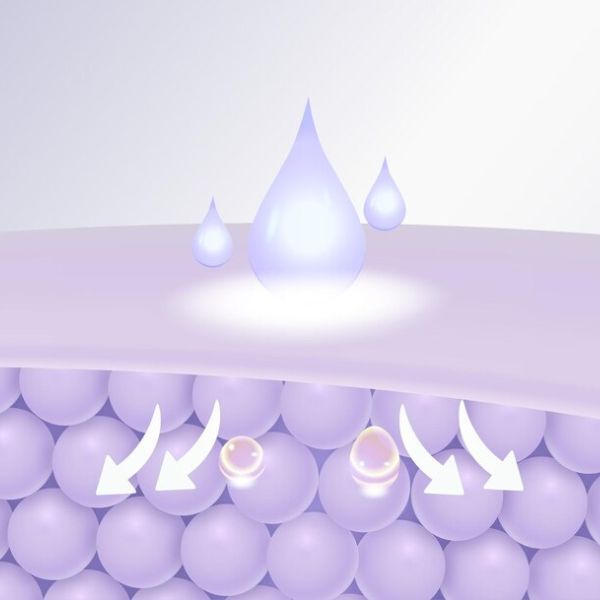The term “clean skincare” has gained massive popularity, with promises of natural, safe, and non-toxic products. But does “clean” always mean safe? Unfortunately, not all claims hold up under scrutiny. Here, we debunk common myths about “clean skincare” and reveal what you really need to know to protect your health and make informed choices.
Table of Contents
Myth 1: “Clean” Means Toxin-Free
Reality: The term “clean” is largely unregulated.
While the idea of “clean skincare” sounds appealing, the lack of strict regulations in the beauty industry means that many products labeled “clean” or “natural” can still contain harmful ingredients. Terms like “fragrance” or “proprietary blend” often hide toxins, as manufacturers are not required to disclose every component.
For example, a product may claim to be natural but still include synthetic preservatives or chemicals under vague labels. Always check for full ingredient lists and avoid relying solely on marketing terms.
Myth 2: Natural Ingredients Are Always Safe
Reality: Natural doesn’t always mean harmless.
Just because an ingredient is derived from nature doesn’t mean it’s risk-free. Poison ivy is natural, but you wouldn’t want it in your skincare! Similarly, natural products may still include allergens, irritants, or poorly tested substances. Additionally, adulteration in natural ingredients is a growing concern. For example, turmeric is celebrated for its skin and health benefits, but low-quality or adulterated turmeric, often contaminated with heavy metals, can do more harm than good. Apart from allergens and irritants, with natural ingredients, one-size-fit-all doesn’t always work. A natural ingredient like turmeric might help your skin with one concern but may also trigger a reaction in other areas.
Instead: Look for products that combine safe, natural ingredients with evidence-based formulations.
Myth 3: Fragrances Are Harmless
Reality: Fragrance is one of the most misleading terms in skincare.
The term “fragrance” can encompass hundreds of chemicals, many of which are linked to allergies, hormone disruption, and even cancer. It’s a common loophole that allows manufacturers to include harmful ingredients without full transparency.
Pro Tip: Opt for fragrance-free products or those scented with pure essential oils (and even then, check for potential sensitivities).
Myth 4: Not All Parabens Are Unsafe Reality
Reality: All parabens are unsafe. Parabens, often used as preservatives, are known endocrine disruptors that mimic estrogen. They’ve been linked to reproductive health issues, breast cancer, and early puberty. The reality is that there’s no safe level of paraben exposure, and safer alternatives are available. Many brands now use these alternatives, so parabens are entirely avoidable.
Look out for: Methyl Paraben, Butyl Paraben, Propyl Paraben on labels.
Myth 5: Skincare Ingredients Only Affect the Skin

Pic credits: Freepik
Reality: Many harmful compounds penetrate the skin and affect overall health.
Your skin indirectly absorbs what you apply, which means harmful ingredients can enter your bloodstream and accumulate over time. The effects include:
- Hormonal Imbalances: Ingredients like parabens and phthalates can disrupt endocrine function.
- Neurological Damage: Chemicals such as toluene (in nail care) can harm the nervous system.
- Respiratory Issues: Volatile organic compounds (VOCs) in synthetic fragrances is doubted to worsen asthma and allergies.
- Immune Suppression: Antibacterial agents like triclosan disrupt gut health, weakening immunity.
Myth 6: Regulations Ensure Product Safety
Reality: Cosmetics are one of the least regulated industries.
In many regions, cosmetic products do not require pre-market approval. This leaves safety assessments up to manufacturers. As a result, harmful ingredients often go unnoticed by consumers.
How to Make Smarter Choices
- Read Labels Thoroughly: Familiarize yourself with harmful ingredients like parabens, phthalates, triclosan, and synthetic fragrances.
- Prioritize Transparency: Support brands that disclose all ingredients and avoid vague terms.
- Choose Certified Products: Look for certifications like USDA Organic, or similar standards for added assurance.
The Power of Transparency: ThinkPink Movement
ThinkPink is all about driving change in the skincare and many other industries by demanding full disclosure and accountability. By joining the movement, you support a future where products are genuinely clean, safe, and free from hidden toxins.
Learn more and join the ThinkPink Movement Here.
A Final Word
Your skin deserves better than clever marketing tricks. By debunking these myths and demanding transparency, you can protect your health and drive change in the industry. It’s time to redefine “clean skincare” with truth, safety, and integrity.
Make informed choices, because your health matters.
Disclaimer: This content is for informational purposes only and is not a substitute for professional medical advice, diagnosis, or treatment. Always consult your healthcare provider before trying any new food items, supplements, or products, especially if you have an existing medical condition or allergies.
References-
Nurmatov, U. B., Tagiyeva, N., Semple, S., Devereux, G., & Sheikh, A. (2015). Volatile organic compounds and risk of asthma and allergy: A systematic review. European Respiratory Review, 24(135), 92–101.
Sinicropi, M. S., Iacopetta, D., Ceramella, J., Catalano, A., Mariconda, A., Pellegrino, M., Saturnino, C., Longo, P., & Aquaro, S. (2022). Triclosan: A small molecule with controversial roles. Antibiotics, 11(6), 735.




Comments